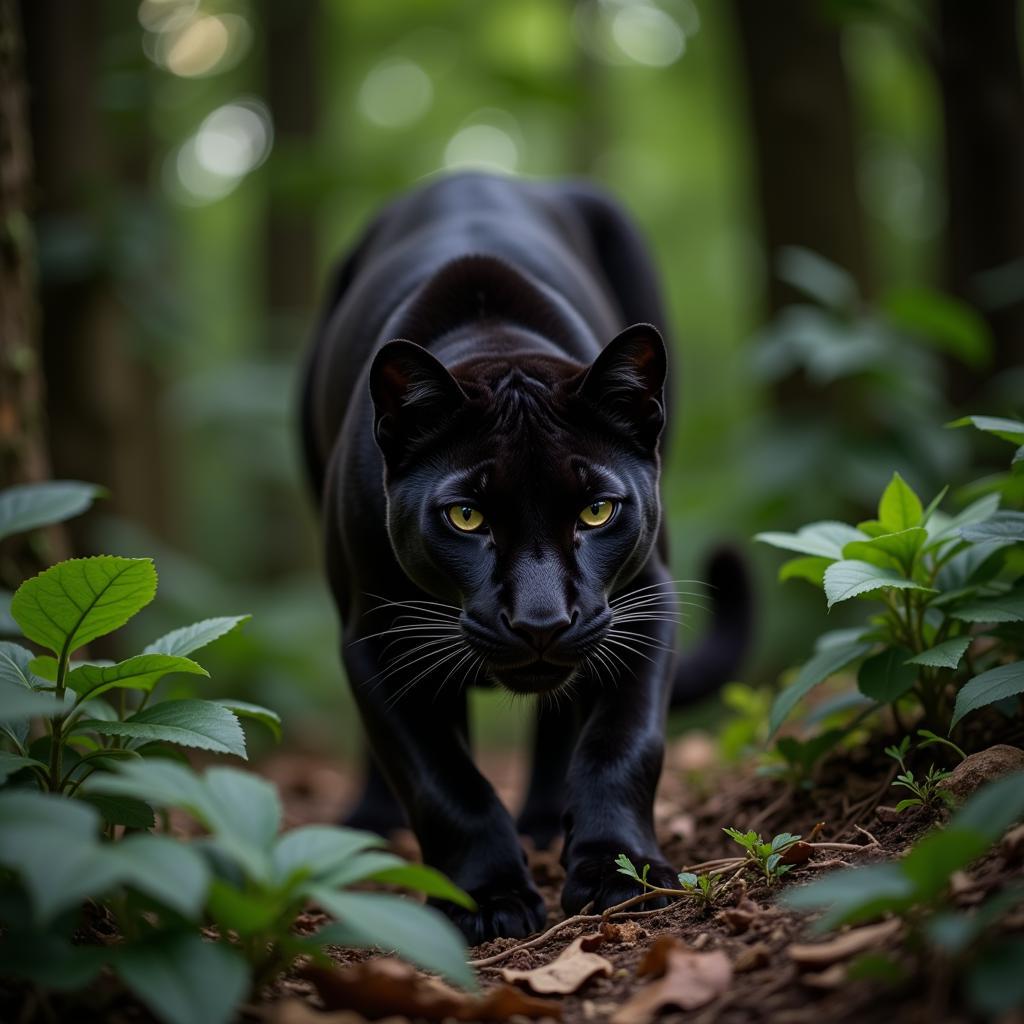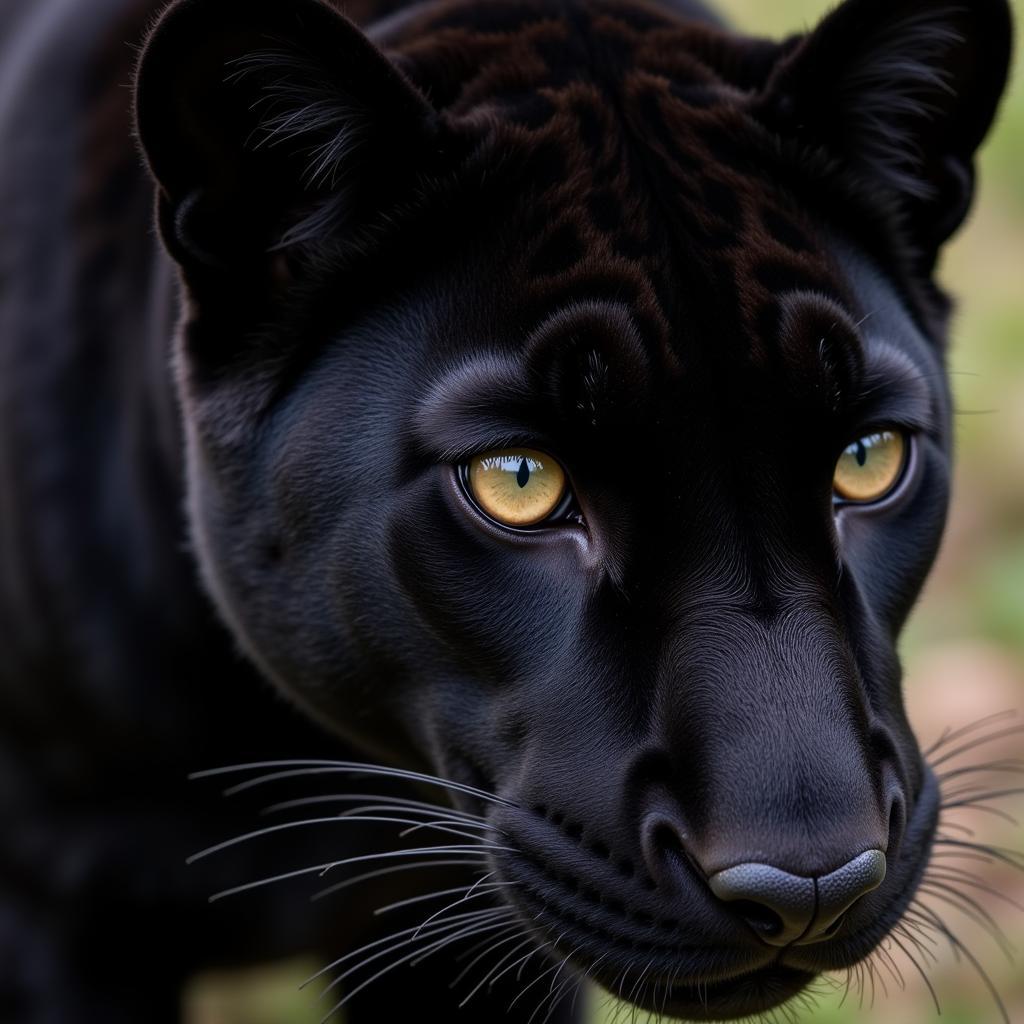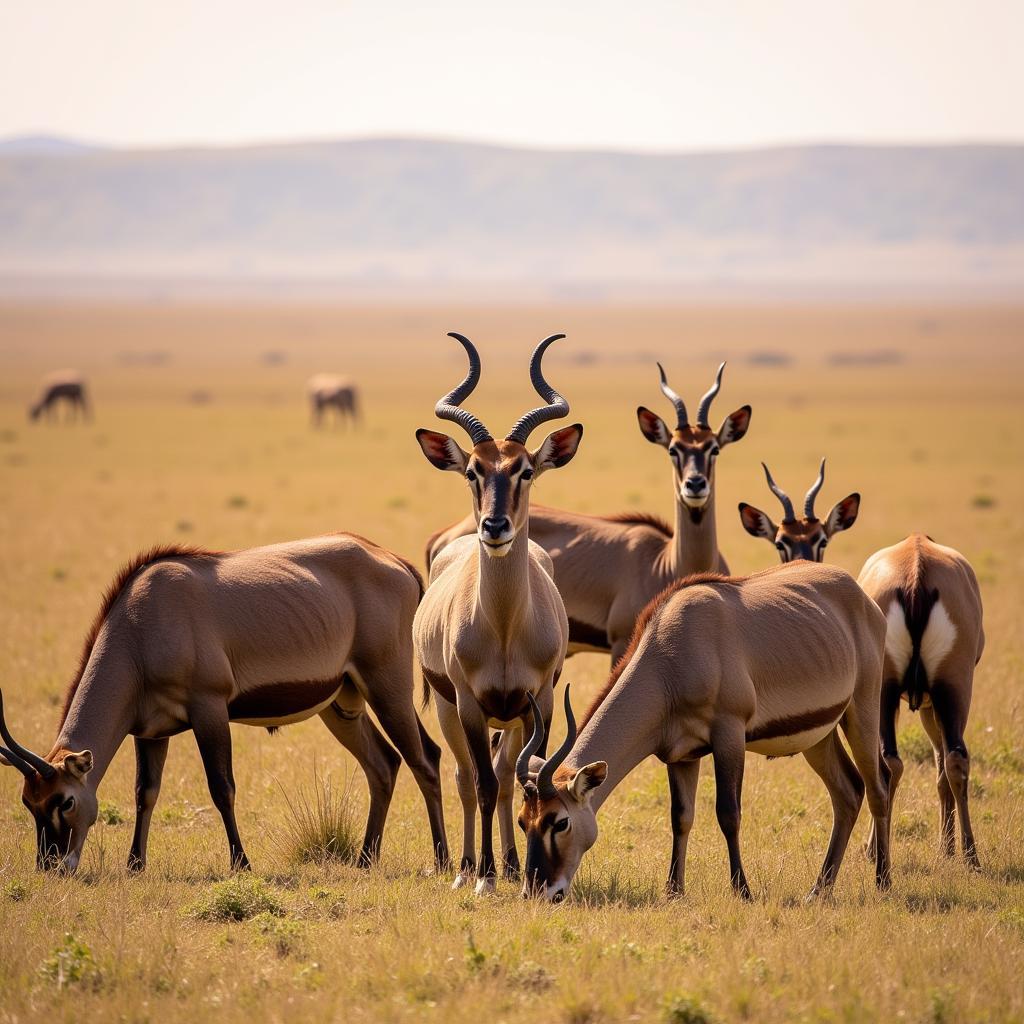Unveiling the Mystery of the African Black Panther Animal
The African Black Panther Animal, a creature shrouded in both myth and reality, continues to fascinate wildlife enthusiasts and researchers alike. These elusive felines, often mistaken for a distinct species, are actually melanistic color variants of larger cat species, most commonly leopards and less frequently jaguars. Dive into the world of these enigmatic creatures and discover the science, myths, and cultural significance surrounding the African black panther.
 A black panther camouflaged in the dense African forest, its dark coat blending seamlessly with the shadows and foliage.
A black panther camouflaged in the dense African forest, its dark coat blending seamlessly with the shadows and foliage.
Understanding Melanism: The Science Behind the Black Coat
What makes an African black panther black? The answer lies in melanism, a genetic mutation that results in an overproduction of melanin, the pigment responsible for dark coloration. This abundance of melanin creates the panther’s striking black coat, although closer inspection often reveals the faint outline of the characteristic rosette patterns found on leopards. While commonly referred to as “black panthers,” these animals are simply leopards or jaguars with melanism. In Africa, the black panther is almost exclusively a melanistic leopard.
 Close-up of a black panther's fur, revealing the faint rosette patterns underneath the black coat.
Close-up of a black panther's fur, revealing the faint rosette patterns underneath the black coat.
Habitat and Distribution of the African Black Panther Animal
African black panthers are primarily found in the dense rainforests and forested regions of sub-Saharan Africa. The dense vegetation provides ideal camouflage for these nocturnal predators, allowing them to effectively ambush prey such as antelopes, monkeys, and rodents. The african black jaguar isn’t commonly found in Africa, rather melanistic jaguars are typically found in South America. Learning about different melanistic felines can broaden your understanding of this fascinating phenomenon.
African Black Panther: Myths and Legends
Across various African cultures, the black panther holds a prominent place in folklore and mythology. Often seen as a symbol of power, mystery, and grace, these creatures feature in traditional stories, often depicted as guardians or shape-shifters. This mythical representation further contributes to the mystique and fascination surrounding the African black panther animal. For a deeper understanding of the cultural significance of leopards, check out this resource on the african black leopard wiki.
Conservation Status and Threats
Like many large cat species, African black panthers face numerous threats, including habitat loss due to deforestation, poaching for their fur and other body parts, and human-wildlife conflict. Conservation efforts are crucial to protect these magnificent creatures and ensure their survival for future generations. To learn more about African wildlife conservation, you might be interested in reading about other african black animals.
What are the main threats to African black panthers?
Habitat loss, poaching, and human-wildlife conflict are the primary threats.
Where are African black panthers most commonly found?
They are typically found in the dense rainforests of sub-Saharan Africa.
The Black Panther in Popular Culture
The image of the African black panther animal has transcended its natural habitat and become a powerful symbol in popular culture, often representing strength, elegance, and mystery. From literature and film to fashion and art, the black panther continues to capture the imagination of people worldwide. Are you interested in learning about the cultural connections between different ethnicities? Explore the african american asian topic.
“The black panther is a truly remarkable animal, its mystique amplified by its elusive nature and powerful symbolism,” says Dr. Khadija Salim, a renowned wildlife biologist specializing in African big cats. “Protecting these creatures is not just about preserving biodiversity, but also safeguarding a vital part of our cultural heritage.”
Another expert, Dr. Adebayo Olajide, a cultural anthropologist specializing in African folklore, adds, “The black panther embodies the spiritual connection between humans and nature, a testament to the rich tapestry of African traditions.” The power of this animal extends beyond the physical realm, inspiring awe and wonder. If you’re interested in other impressive African felines, check out the black african lion.
In conclusion, the African black panther animal, with its striking beauty and enigmatic nature, remains a captivating subject. Understanding the science behind its black coat, its habitat, the threats it faces, and its cultural significance is crucial for appreciating and conserving this magnificent creature.
FAQ
- Are black panthers a separate species? No, they are melanistic variants of leopards or jaguars.
- Why are black panthers black? Due to a genetic mutation called melanism, which causes an overproduction of melanin.
- Where do African black panthers live? Primarily in the dense rainforests of sub-Saharan Africa.
- What do African black panthers eat? They prey on a variety of animals, including antelopes, monkeys, and rodents.
- Are black panthers endangered? They face several threats, including habitat loss and poaching, which impact their populations.
- What is the cultural significance of the black panther? It often symbolizes power, mystery, and grace in African folklore.
- How can I help protect black panthers? Supporting conservation organizations working to protect their habitat and combat poaching is crucial.
Looking for more information about African wildlife? Check out these related topics:
- The majestic African elephant
- The diverse birdlife of the African savanna
- The fascinating world of African primates
Need help planning your African safari adventure? Contact us!
Phone: +255768904061
Email: [email protected]
Address: Mbarali DC Mawindi, Kangaga, Tanzania.
We have a 24/7 customer service team ready to assist you.



